"The Rajah" march and two step by "Marie Louka"
"Marie Louka" is a pseudonym referring to Marie Louise Kaekel, whom Schmid married in 1901.
publishing history of "The Rajah" march and two step:
1902 sheet music for piano published by H. A. Weymann & Son
1902 band arrangement recorded by Sousa's Band conducted by Arthur Pryor that broke up some tied
______notes of the 1st strain and replaced the 4th strain with a repetition of the 3rd strain
1915 sheet music for piano published by Volkwein Bros.
______The Music Trade Review PITTSBURGH, PA., 1915, October 5:
______"The sheet music section of Volkwein Bros., 516 Smithfield street, reports that the Marie Louka
______compositions, purchased recently from Weymann & Sons, Philadelphia, are selling big. They
______consist of fourteen semi-classical compositions for the piano, and were originally published by
______Weymann & Sons, who have sold the entire rights to Volkwein Bros."
1942 Volkwein Bros. included "The Rajah" in Left Foot, Right Foot March Album for Piano

Although the term rajah is often associated with India, the cover art of the 1902 edition of "The Rajah" was red
and white with five-pointed stars, one star with a crescent as on the Turkish Ottoman Empire flag shown below.
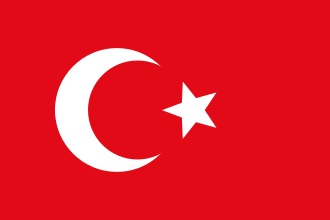
In 1902 Johann C. Schmid was living in Philadelphia and probably knew that in Reading Pennsylvania
stood the the Rajah Temple, built in 1892 for the Rajah chapter of the Ancient Arabic Order of Nobles
of the Mystic Shrine, a fraternal organization for freemasons founded in 1872 for fun and fellowship.
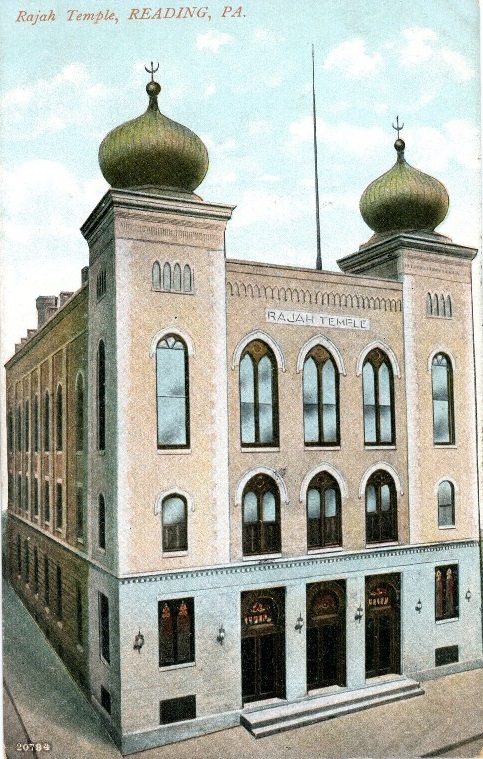
On eBay I found one of these postcards with a 1907 postmark. Why the Rajah chapter of A.A.O.N.M.S.
should in 1917 move from this location to another in Reading they don't explain. The United States
declared war on Germany in 1917, and the Ottoman Empire was allied with Germany. The second Rajah
Temple in Reading was destroyed by fire in 1921 and rebuilt in 1922 as the Ottoman Empire was
collapsing. In 1922 John Philip Sousa became a member of the Almas chapter of A.A.O.N.M.S., and in
1923 participated in a national gathering of that organization in Washington DC, during which Sousa
conducted a band that played his 1923 march Nobles of the Mystic Shrine. Here is a vintage fez hat for
a member of Rajah Temple.

In 1925, Mustafa Kemal Ataturk, the first president of the Republic of Turkiye, banned the wearing of
fez hats in Turkiye because of their connection with the former Ottoman Empire. The A.A.O.N.M.S. is
now named Shriners International. The color of hats for Rajah Temple members is now the familiar
Shriners International maroon.
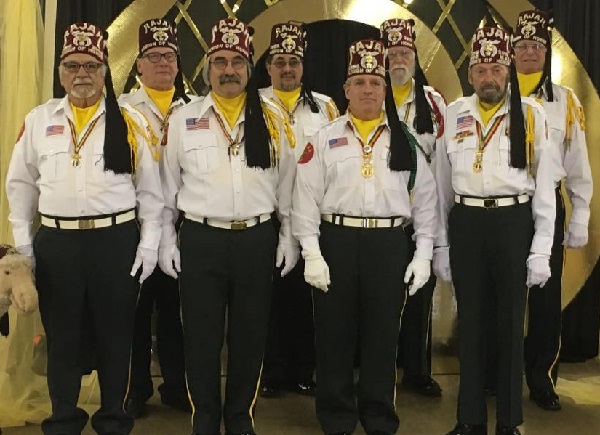
Schmid dedicated both his 1902 march "The Rajah" and his 1904 song "Daisies" to "my friend Mr. Frank
L. Hagner." What would "The Rajah" mean to Hagner? Was Hagner a member of the Rajah Temple?
This 1942 edition in Left Foot, Right Foot March Album for Piano does not include the dedication to Mr. Frank L. Hagner.
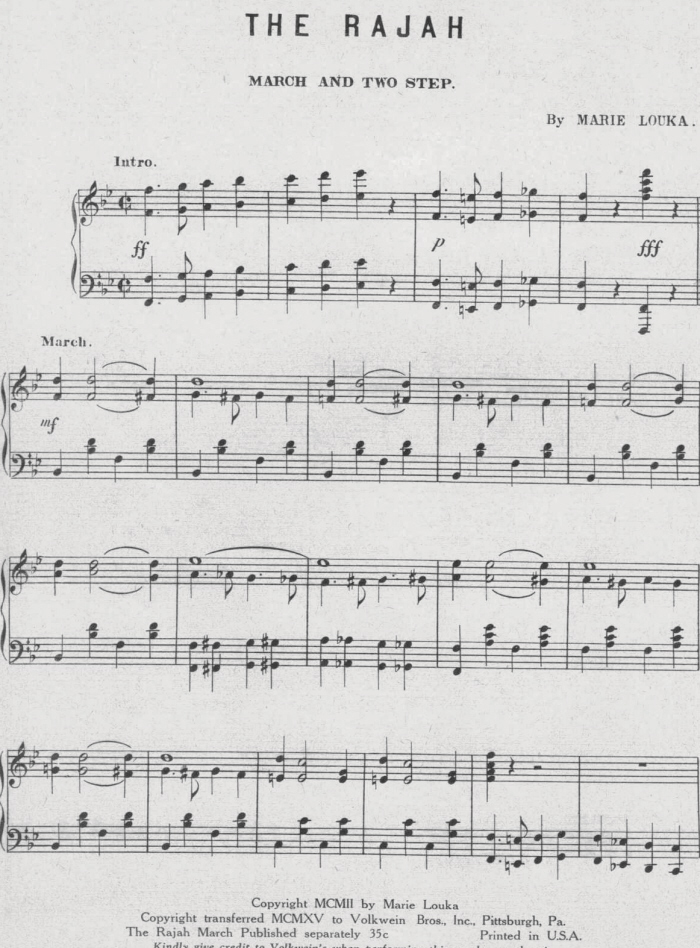
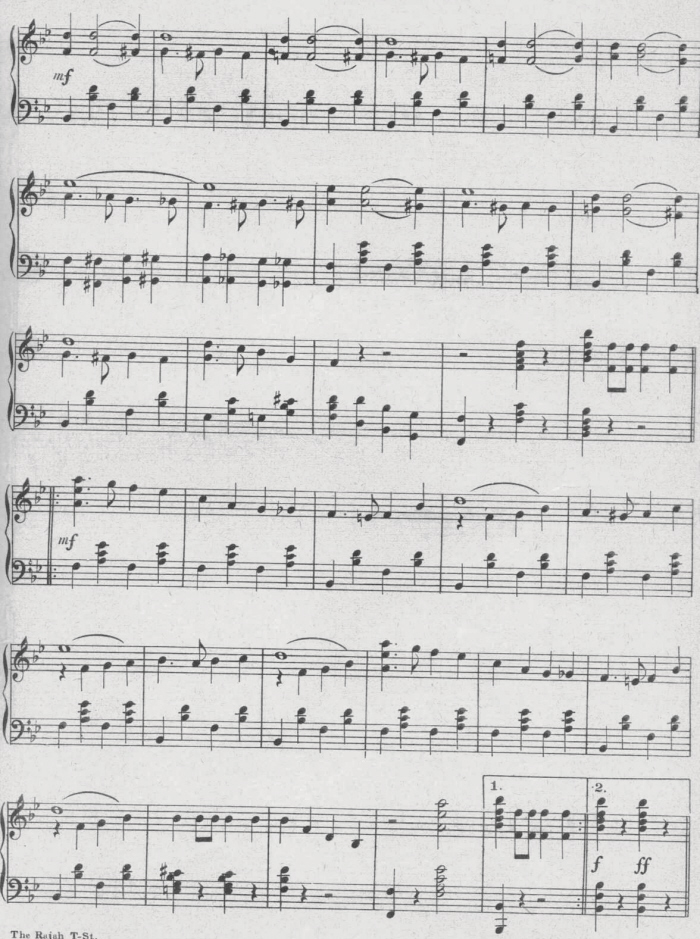
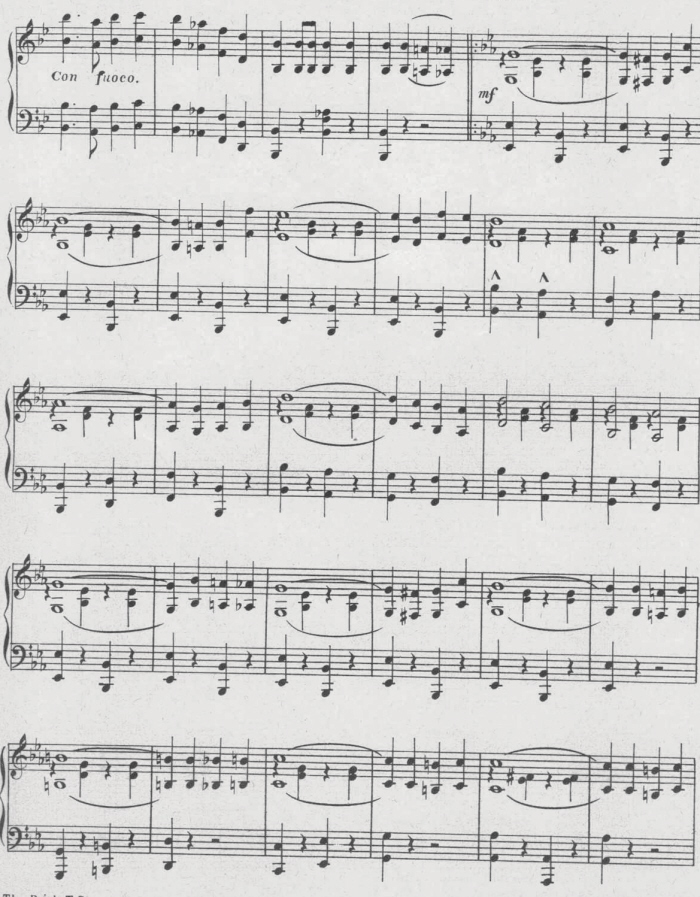
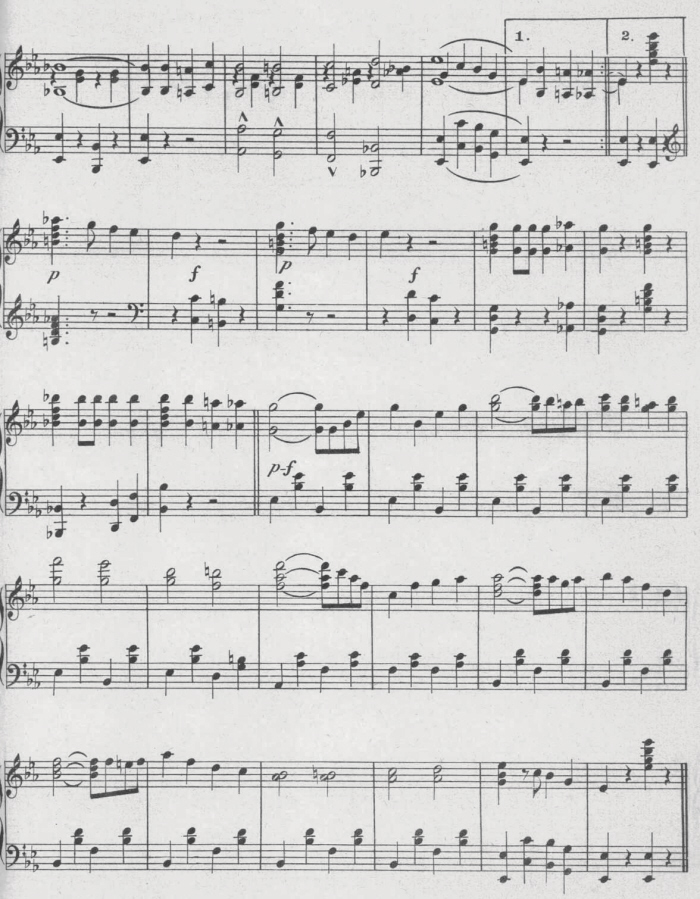
Although the 4th strain is not enclosed in repeat brackets, the p-f at its beginning indicates a soft playing followed by a
loud playing. The 1902 and 1915 editions have this same odd way of indicating that the 4th strain should be played twice.
marches by Johann C. Schmid
Highlighted titles link to scanned images of sheet music or manuscripts.
Schmid's various names and pseudonyms are in italic font.
First publishers of sheet music are in red font.
Other information is in brown font.
(1892) Bravado John C. Schmid Theodore Presser, Philadelphia Pennsylvania
(1892) Der Kurassier John C. Schmid Theodore Presser, Philadelphia Pennsylvania
(1892) On Parade Johann C. Schmid Theodore Presser, Philadelphia Pennsylvania
(1895) New York March Johann C. Schmid Chas. A. Mulliner, Milton Pennsyvania
(1896) State Fencibles' March Johann C. Schmid R. J. Ralston & Co., Philadelphia Pennsylvania
(1897) High School March and Two Step Johann C. Schmid William H. Keller, Easton Pennsylvania
(1899) National Export Exposition S. Casper Johann The Jennings Music Co., Philadelphia Pennsylvania
(1900) The American Heiress Johann C. Schmid Chas. A. Mulliner, Milton Pennsyvania
(1902) The Rajah Marie Louka H. A. Weymann & Son, Philadelphia Pennsylvania
_______This was Schmid's most popular march. "Composer of The Rajah March" was
_______printed on sheet music of later "Marie Louka" piano pieces to sell more copies.
(1904) The Fadette Marie Louka World Publishing Co., Philadelphia Pennsylvania
(1904) The North American Marie Louka H. A. Weymann & Son, Philadelphia Pennsylvania
_______The North American was a Philadelphia newspaper with offices in The North American Building in Philadelphia.
(1905) The Baseball March Johann C. Schmid United States Music Co., Williamsport Pennsylvania
(1905) Fire and Flame Marie Louka H. A. Weymann & Son, Philadelphia Pennsylvania
(1905) Zuma March-Intermezzo Johann C. Schmid H. A. Weymann & Son, Philadelphia Pennsylvania
(1906) The Captain General Marie Louka H. A. Weymann & Son, Philadelphia Pennsylvania
(1906) The Challenger Johann C. Schmid H. A. Weymann & Son, Philadelphia Pennsylvania
(1906) William L. Elkins March Johann C. Schmid
_______William Lukens Elkins (1832–1903) was a Pennsylvanian businessman and art collector.
(1907) Lusitania: Queen of the Ocean Johann C. Schmid United States Music Co., Williamsport Pennsylvania
_______The Lusitania was a British ocean liner launched in 1906. She was destroyed by a German U-boat in 1915.
(1907) The Ten=Ten March Johann C. Schmid H. A. Weymann & Son, Philadelphia Pennsylvania
(1908) Footlight Flashes George Gordon Meade M. D. Swisher, Philadelphia Pennsylvania
(1909) The Grand Old Bell Medley March Johann C. Schmid H. A. Weymann & Son, Philadelphia Pennsylvania
(1910) The Passing Caravan Patrol Johann C. Schmid
(1912) Cap and Gown Marie Louka The Whitney Warner Pub. Co., Detroit Michigan
(1912) College Colors Paul A. Embrock cited on the first page of "Drumsticks" (1912)
(1912) Drumsticks Paul A. Embrock The Whitney Warner Pub. Co., Detroit Michigan
(1924) Victorious Peace Marie Louka piano roll
(1941) We're Standing By America Marie Louka At the bottom of the manuscript's first page is a note stating that the
_______manuscript was completed on 1941-12-05, which was two days before the 1941-12-07 attack on Pearl Harbor.
(1945) The War Correspondent / Topic of the Day Marie Louka manuscript
|